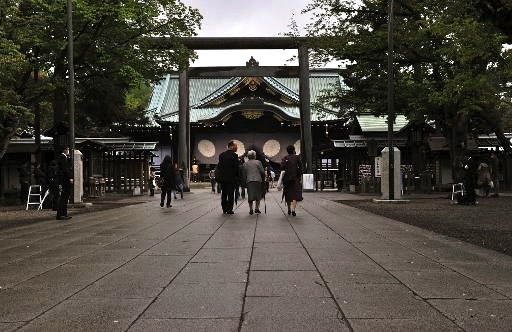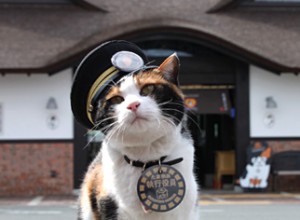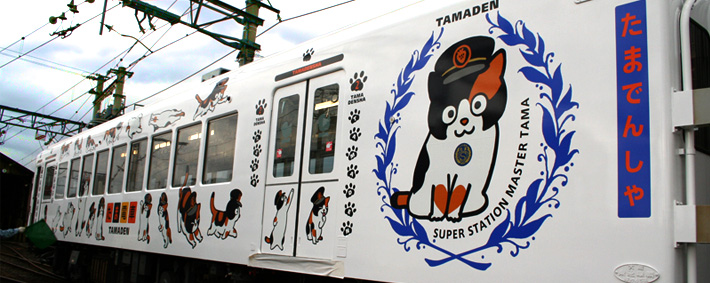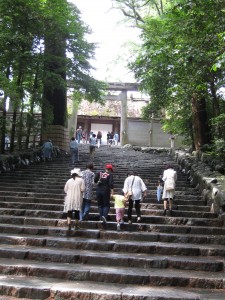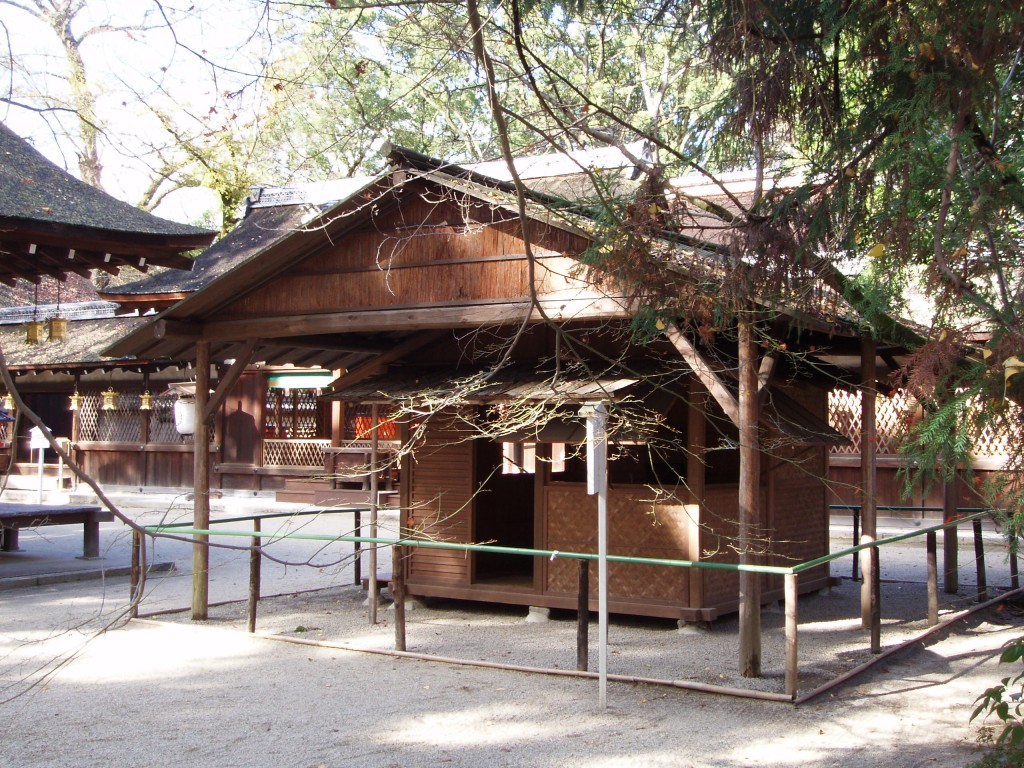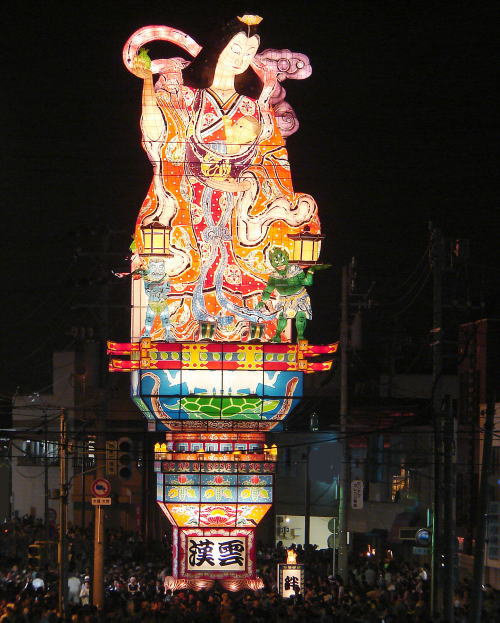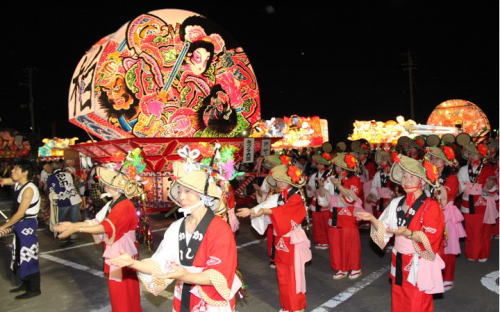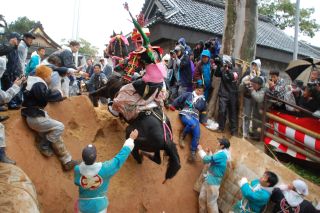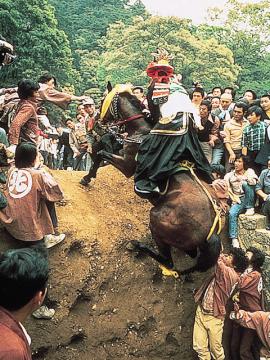The traditional pilgrimage to Dewa Sanzan, or the Three Mountains of Dewa, begins with the smallest and northernmost Mount Haguro. The plaque at the beginning of the path through Zuishin Gate tells of 33 carvings of “gourds, sake cups and the like” scattered along the 2,446 steps to the top of the mountain, and that whoever can find all of them will have their dreams come true.
It didn’t take me long to realize this isn’t so much an egg hunt as a goose chase, a clever distraction from the arduous ascent. Fifteen minutes and a few hundred steps in, my legs trembled, my clothes dripped sweat and I had yet to spot a single carving.
At least the scenic rewards of Mount Haguro were more immediate. Only just beginning my three-day pilgrimage, I’d already passed the high waterfall that serves to purify those foolhardy enough to undertake such a task, as well the famed five-story pagoda first built by Taira no Masakado in the 10th century.
Dewa Sanzan in Yamagata Prefecture has been a site of devotion since its founding by Prince Hachiko in 593. During the Heian Period (794-1185) it became an important center for Shugendo, a syncretic belief system that borrows elements from esoteric Buddhism and Shinto, and emphasizes the relationship between humans and nature.
I was midway up the mountain and bent over gasping for air when I noticed the clownish nose and mocking eyes of a tengu goblin staring back at me. I’d finally spotted my first carving on the stone stairs. Just then a trio of white-clad yamabushi, Shugendo practioners adhering to a rigorous form of mountain asceticism, passed by carrying pilgrim’s staffs topped with tinkling silver bells. The plonk-plonk of wood hitting stone reverberated around the towering sugi (Japanese cedar) trees that lined the path.
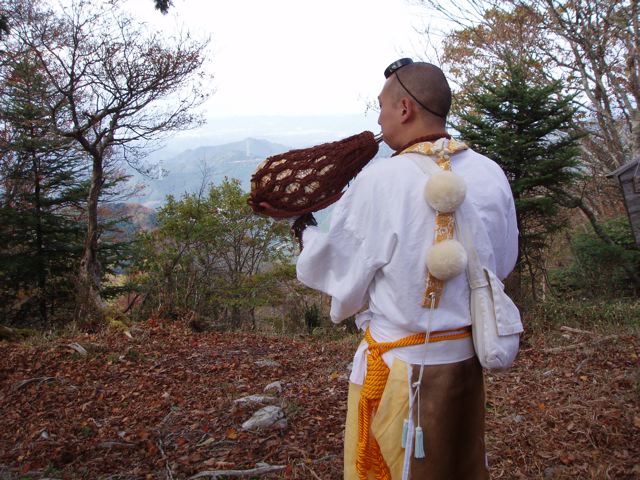
A mountain ascetic blows a horagai (conch horn) to announce his presence on the mountain
As the traditional entrance to Dewa Sanzan, Mount Haguro enshrines all three mountains’ deities at Sanjin Gosaiden. The nearly 200-year-old structure at the mountain’s flat summit blends elements of Shinto and Buddhism under its thick thatched roof, and upon my late afternoon arrival I found a few dozen tourists and worshippers alike listening to a monk’s resonant voice chanting sutra. Two other baritone chants unfurled from smaller temples to the left and right and overlapped in the humid air where sharp, clarion cries from unseen birds stitched together a rich sonic tapestry.
I bathed and retired to my room at the Saikan sanrūjō, an inn for pilgrims and Shugendo practitioners, for some quiet time before a dinner of traditional shōjin ryori (Buddhist vegetarian, or “devotion” cuisine). A group of yamabushi ate in a separate dining hall, apparently forbidden from consorting with riffraff like me.
I went to bed early knowing I had a long day ahead of me, but was awakened just before midnight by the sound of my fellow lodgers chanting in the main hall, and again around 4 a.m. by the sounding of a horagai, a trumpet fashioned from a conch shell, summoning the yamabushi to their daily training.
I’d come to Dewa Sanzan chasing a rumor that you could still hike the original 20-km route from Haguro to Gassan, the second and highest of the pilgrimage’s three peaks. I’d been asking everyone local I could corner about the apocryphal trail but kept getting the same answer: Most of the route had been paved over more than 40 years ago and the resulting road ended at Gassan’s eighth station, close to where I was to spend my second night.
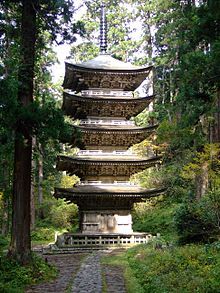
The five-tiered pagoda on Mt Haguro
Luckily the original path off of Mount Haguro still existed and would take me by the visitors’ center, where I could perhaps find fresh intelligence. Stepping from stone to stone I wondered if my feet fell in the same places as those of the haiku poet Matsuo Basho when he passed this way in 1689, before writing about his visit to Dewa Sanzan in Japan’s most famous travelogue, the “Narrow Road to the Deep North.”
At the visitors’ center I procured a topographical map of the area, consulted with the lone employee and confirmed my worst fears. The old path up the mountain had indeed been paved over. With any romantic notion I may have had of walking in Basho’s footsteps thus deflated, I camped out on the quiet, shaded porch of the visitors’ center to wait for the next bus.
At 1,984 meters, Mount Gassan is nearly four times as tall as Mount Haguro. The road to the eighth station meanders up the north ridge and affords long, sweeping views down the valleys on either side and over the Japan Sea to the west. Arriving at Midahara Shrine hours ahead of schedule, I left my backpack with the young priests and spent the afternoon wandering around the alpine wetlands north of the peak where squadrons of dragonflies conducted maneuvers over the sedge and red-bellied salamanders swam lazily in the small highland tarns.
After another meal of foraged mountain vegetables, I walked through the moonlit marsh to soak up the silence and take in the clear air. Returning to the sanrūjō, I found the young priests had changed into shorts and tatty T-shirts. They sat chain smoking around a small television showing a variety program about monks at Mount Koya, where a Shingon abbot exhorted the importance of man’s relationship to nature. The dressed-down priests nodded in agreement between the smoke rings they blew.
It wasn’t the blare of a horagai that woke me the next morning, but solemn drumming as the priests, presumably back in uniform, ritually opened the shrine for another day.
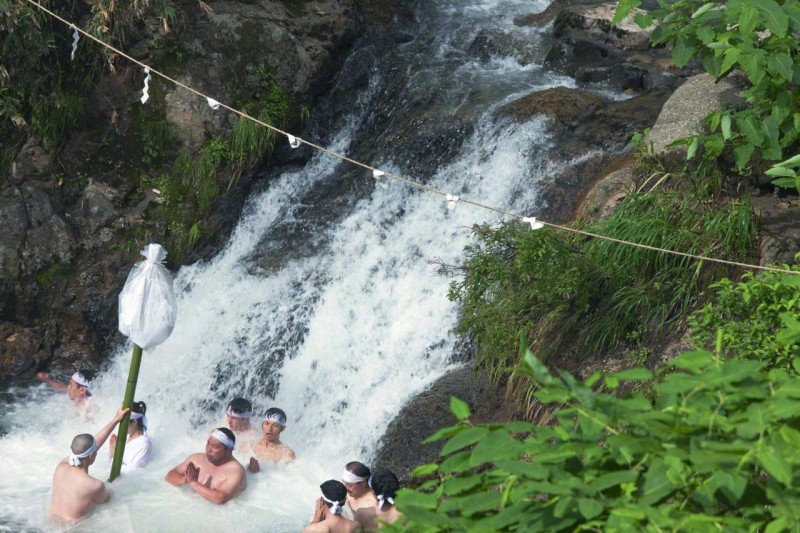
The real path of mountain asceticism on Dewa Sanzan (courtesy corbin blog)
Leaving the wetlands I ascended into a ceiling of clouds that had moved in overnight. The fog limited my view significantly as I made my way across fields of gray stone patched with snow and through vivid green chaparral stippled by bright alpine wildflowers. Occasionally the rolling banks revealed crystalline views across the valley like glimpses of the floating world.
The fog so concealed Gassan Shrine where it jutted from the mountain’s peak that I hardly knew when I had arrived. Owing to its prominent placement and the high stone wall that surrounds it, the shrine resembles a medieval military garrison more than a far-flung pilgrim’s post.
I was purified by one from another cadre of priests, who seemed even younger than those at Midahara, before entering Dewa Sanzan’s holiest site. I silently admired the shrine’s principle objects of worship, three round mirrors of pounded and polished metal that gleamed in the murky light, before continuing on.
The fog soon turned to showers as I made my careful, calf-smashing descent down the rain-slicked path west toward Mount Yudono. A section of trail known as the cow’s neck skirted a massive ice sheet so vast I couldn’t discern its far edges as they dissolved into the mist. The ice had crept up the slope to envelope several dozen meters of the trail, and when I reached the far side of this white expanse I encountered a group of hikers waiting cautiously for me — or anyone, really — to appear before venturing onto the ice themselves.
The trail then arced around to the northern slope of Mount Yudono before a final steep descent to Dewa Sanzan’s final stop, Yudono Shrine, near the base of the mountain. The penultimate segment is so steep that steel ladders have been bolted to the rock itself, and in places rivulets of water stream beneath them. At first I mistook this for draining rainwater before realizing the ladders were bolted over a waterfall.
The rain had abated and eventually the ground leveled out as I shakily covered the final few hundred meters to my ultimate destination. With each step I felt a bit more of the pilgrim’s singular pride, that rare blend of accomplishment, relief and reverence.
It’s tradition not to reveal what one sees inside the hallowed grounds of Yudono Shrine, and one that I intend to keep. I’ll only say that every arduous step I took to get there made the experience that much more gratifying. For those of you have been, you’ll get my little joke. To everyone else, you’ll have to make your own way there and discover Yudono’s holy secrets for yourself.
**************
Getting there: Mount Haguro and Yudono Shrine can both be reached by regular bus service from Tsuruoka for around ¥1,400 one way. Mount Gassan and Mount Yudono are closed from October through June due to heavy snow, and bookings at all sanrūjō must be made in advance.
**************
For an excellent NHK World video introduction to Dewa Sanzan mountain asceticism (Shugendo), please see https://vimeo.com/196561540 (28 mins)
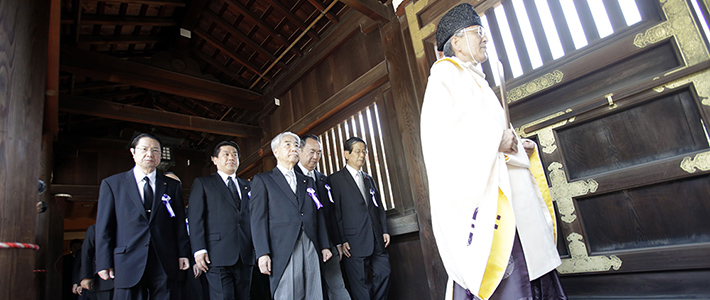

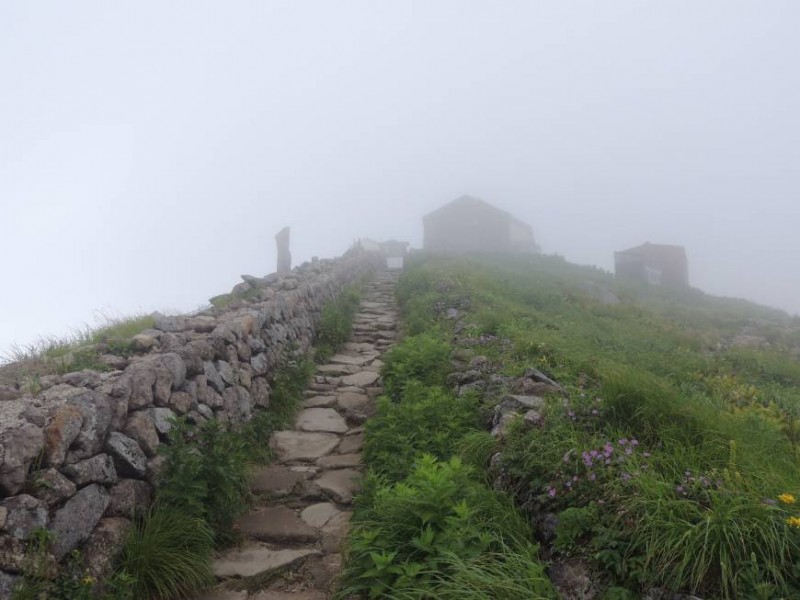



 Click to enlarge (photos by Davey Young)
Click to enlarge (photos by Davey Young)



